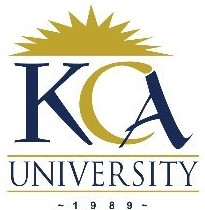 UNIVERSITY EXAMINATIONS: 2012/2013
UNIVERSITY EXAMINATIONS: 2012/2013
FIRST YEAR EXAMINATION FOR THE BACHELOR OF SCIENCE
IN INFORMATION TECHNOLOGY
BIT 1305 COMPUTER NETWORKS
DATE: DECEMBER, 2012 TIME: 2 HOURS
INSTRUCTIONS: Answer Question ONE and any other TWO
QUESTION ONE
a) Differentiate between the following:
i). Logical topology and physical topology [2 Marks]
ii). Logical network address and Physical network address. [2 Marks]
iii).Switching and routing [2 Marks]
iv).Routable and non-routable protocols. [2 Marks]
b) Discuss the three (3) driving forces behind the development and advancement of
c) computer networks. [6 Marks]
d) “Transmission rates” and “Types of nodes” are two ways in which computer
networks can be categorized. Briefly discuss them. [6 Marks]
e) The OSI and the TCP/IP are common network reference models.
i). Give three (3) common aspects between the two protocol stacks [3 Marks]
ii). Describe any three (3) differences between the two protocol stacks [6 Marks]
f) Which class does the IPv4 address 169.48.245.89 belong to? Show your working.
[1 Mark]
QUESTION TWO
a) i) Distinguish between CSMA/CD and CSMA/CA. [4 Marks]
ii) Where are they applied? [2 Marks]
b) Briefly describe the similarity and differences between switches and routers.
[4 Marks]
c) What is a collision domain? [2 Marks]
d) What are the differences between routing and forwarding?Briefly explain each of
them. [4 Marks]
e) Compare and contrast between packet switching and message switching.
[4 Marks]
QUESTION THREE
a) Compare and contrast the following:
i) Time Division Multiplexing and Frequency Division Multiplexing
[3 Marks]
ii) Processing delay and Propagation delay [3 Marks]
iii) POP3 and IMAP [3 Marks]
b) The continuing improvements in performance and decline in prices, together with
the inherent advantages of optical fiber, have made it increasingly attractive for
local area networking. Explain briefly any four (4) characteristics that distinguish
optical fiber from twisted pair or coaxial cable. [4 Marks]
c) Explain any four (4) ways that network managers can enhance availability and
reliability of their networks. [4 Marks]
d) Briefly discuss the three (3) fundamental characteristics of a data communication
system. [3 Marks]
QUESTION FOUR
a) Changing IPv4 to IPv6 is often justified by the larger address space. Explain two
(2) other reasons for changing IP version. [4 Marks]
b) Internet services often use so-called client server paradigm. New ad-hoc
networks, on the other hand, use peer-to-peer services. Compare these two ways
and give examples of services or applications. Explain the benefits, drawbacks,
and problems of both paradigms. [6 Marks]
c) List and briefly explain any three (3) benefits that computer networks provide to
people. [6 Marks]
d) Briefly discuss any two (2) benefits of the OSI Reference Model. [4 Marks]
QUESTION FIVE
a) Describe the steps a client goes through to get an IP address from a DHCP server.
[6 Marks]
b) Explain any four (4) possible sources of noise in cables. [4 Marks]
c) Differentiate between the following terminologies as used in computer networks:
i) Broadband and Baseband signaling [2 Marks]
ii) Half duplex and full duplex transmission [2 Marks]
d) Most modern telecommunication companies are adopting digital
communication/transmission for a number of reasons. Briefly discuss any three
(3) of them. [6 Marks]
